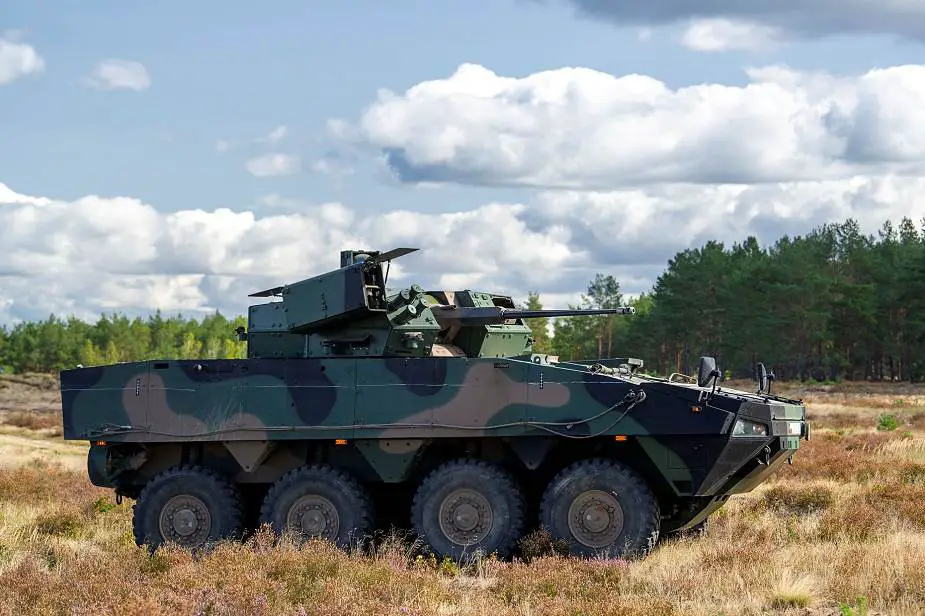As reported by Artur Marciniak in Defence 24, the consortium responsible for the ZSSW-30 unmanned turret has received an invitation to negotiate the deliveries of this system, primarily designed to be fitted onto the Rosomak APCs.
Follow Army Recognition on Google News at this link

Polish-made Rosomak 8x8 armored Infantry Fighting Vehicle fitted with unmanned weapon station ZSSW-30 armed with 30mm automatic cannon. (Picture source: Twitter account Damian Ratka)
Col. Artur Kuptel, head of the Polish army’s Armament Inspectorate, said: "When it comes to the ZSSW-30 turret, we have completed the preliminary and qualification test programs with a success. I do not want to speak about the details, but I can say that an invitation has been sent to entities that would decide on conditions and price that would be associated with this agreement so that we can modernize the Polish Armed Forces so that we have equipment at our disposal of previously unavailable capabilities. This description probably matches the ZSSW system. (...) Until the negotiation comes to an end, I will not be able to disclose any details. I can only promise that an efficient negotiation process would create a possibility to fit unmanned turrets on Rosomak vehicles that are ready to receive them".
The ZSSW-30 turret has been developed as a result of an R&D study pursued by a consortium led by HSW, with support provided by WB Electronics. First, the said turret system is to be fitted onto the Rosomak APCs that are going to be commissioned, Artur Marciniak writes.
The turret features a 30 mm Bushmaster Mk 44/S gun that can shoot ABM ammunition and be converted to a 40 mm caliber. It is also armed with a coaxial 7.62 mm machine gun and dual Spike ATGM launcher. The turret also features an advanced fire control system with an auto tracker, and two optronic systems for the gunner, and the commander (hunter-killer/killer-killer solution).
The framework agreement related to the delivery of turrets, accompanying the development study, has been recently expanded, from 208 to 341 units. First, the turrets would be fitted onto basic Rosomak APCs that currently remain at disposal of the Polish Armed Forces. The Polish military currently has around 100 such vehicles. Procurement of extra vehicles would be required then, to complete the work on the contract.
The standard engines that the base APCs used are no longer manufactured, Artur Marciniak reports. A necessity would emerge to procure the XP variant of Rosomak or modify the existing, standard variant, by installing a new engine. Notably, Rosomak S.A. has already acquired its XP license.
One needs to remember that the ZSSW turrets, so far, are not expected to replace the Hitfist systems that some of the Rosomak vehicles feature. The APC battalions using such vehicles have poor anti-tank capabilities, with a minor quantity of Spike-LR launchers. The initiative to integrate the ATGMs with the Hitfist turret was abandoned a few years back. Thus, reinforcement of the anti-tank capabilities shall be viewed as relevant. This could be done by delivery of more, portable ATGM systems, and/or modernization of the Hitfist turrets through the integration of ATGMs. Alternatively, the Hitfist-30P turrets could also be replaced by ZSSW-30. The latter turret, following relevant modifications, is also to be installed on the prospective Borsuk IFV platform, Artur Marciniak concludes.














